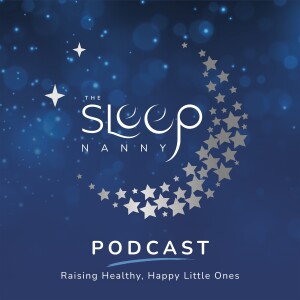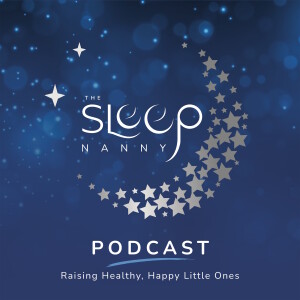
https://youtu.be/r8ex-XlojNQ
This week I want to look at one of the reasons that could be behind your little one’s night wakings, and that is sleep onset. I will explain what that is, what it means and how this could absolutely be the game-changing nugget of wisdom that resolves your little one’s sleep in a really, really big way. So make sure you read until the end so you fully understand what sleep onset is all about.
First of all, what does it mean? What does sleep onset even mean?
It means falling to sleep. It’s the way that sleep comes about. So what could that include? When we fall to sleep, our body goes through a certain sensation of closing down. We close our eyes, our breathing becomes slower, and there are all kinds of things that happen to us physiologically and biologically, but there are also external things that happen as well. So once we understand how we’re falling asleep at the sleep onset, it actually plays a really significant role in how we sustain our sleep throughout the night.
Now, of course, we do wake up. It’s really important to know that nobody just sleeps the whole night without waking. But the wakings are so minimal, sometimes you don’t even know you’ve had one. They can be so partial, so subconscious, semiconscious, you just have this slight arousal and on back off into sleep. They are cycles of sleep.
So you go down into deep sleep, you cycle up, you come through, lighter sleep, and then this is the point where you might just wake up. But, oh, no, we’re down into another sleep cycle. We go down, we’ll go into deep sleep, and we cycle through sleep like this all night long. But it’s when we are in that lighter sleep that we do actually slightly wake and go back off. We have to, our bodies need to do that to regulate and to keep us alive.
And so babies and children are the same, but when they’re tiny, when they’re really little and they don’t actually know how to get to sleep and they haven’t really grasped the sleep onset yet, when they have those cycles that they’re coming into that light sleep and they’re just about to tip over into the next cycle. They find themselves awake and they find themselves and they don’t know how to get back to sleep, because they didn’t know how they got there in the first place. And they cry and they look for your help because they need to get back to sleep.
So this is why the sleep onset is key because once they’re doing it, once their body is in that rhythm and it knows the body just does it and they fall to sleep, then the body and the mind will be trained. They will be efficient and effective at going back to sleep when we have those stirrings and wakings or partial wakings in the night.
So hopefully you feel reassured that, “Oh, okay, waking up is normal,” and it is completely. But it’s the getting back to sleep that matters, and when your little one is doing that, they’re not going to cry out or look for you or look for help because they’re able to do it themselves. So you won’t know that they’ve had two, three, five wakings in the night because they’ve resettled themself when they’ve had those stirrings. And that is when it feels so lovely and like they are sleeping through the night, which is what we all aim for, don’t we, for as soon as possible.
So the thing we need to look at is the sleep onset associations. Now, some people will talk about these as sleep crutches or sleep props, and they’re not all bad. To be honest, you can have healthy, positive sleep onset associations, as well as unhelpful destructive sleep onset associations, and it’s really important that we know the difference between the two.
So a sleep onset association is something that puts your little one to sleep. It’s something, an association that helps them to go to sleep. But some things will help, whereas other things will do the job for them.
For instance, if you rock your baby and you rock, rock, rock, rock, rock all the way to sleep, that’s done it for them. They haven’t really done anything. But if they have a cuddly teddy and they cuddle that teddy, but then they fall asleep, the teddy’s just helped them. It’s given them an element of comfort, but the rest of the job they did and they put themselves to sleep with that cuddling.
If they’re sucking on a dummy or pacifier all the way to sleep, that might be the thing that’s soothing them off to sleep. And this is why when it drops out naturally, because the jaw naturally opens, they’re fine for a while. But then they go into light sleep and they start to immediately do that sucking motion and wait, it’s gone. It’s not there. And what? Hang on, something’s up. And then boom, I’m awake and crying, because they’re missing that thing that got them to sleep before.
However, if they didn’t suckle all the way to sleep, maybe they suckled for calming and comfort, but then it is taken out, if they didn’t suckle all the way to sleep, they wouldn’t be seeking. Their body wouldn’t naturally reactively seek that thing in order to get back to sleep.
Now, some of the things don’t matter at all in the early weeks. With newborns, you can’t spoil them and you can’t get it wrong. Honestly, instinctively, you’re going to rock and cuddle your baby to sleep. You’re probably going to feed them to leave. You’re going to do all these things. Please do not worry about that in those early weeks.
But an awareness of it will pay dividends. Because if you’re aware of how much you’re doing that, you can, around four months in, sometimes sooner, but you can start to just spot and be aware of how much you’re doing for them and how much they’re doing and you can gradually start to tip the scale. So you’re doing a bit less and they’re doing a bit more when they’re getting a bit more practice until they get really, really good at it.
But certainly between four and six months, I would pay a lot more conscious attention to their sleep onset so you can help them to develop that and for that to come through. Because so long as you do it for them, they’ll need you to do it for them. And this is why for some parents that goes on for years, actual years. And it’s like anything, you don’t just go, “Oh, I’ll just wait, one day my child will ride a bike.” No, you have to get a bike for them and put the training wheels on and help them and encourage them and run alongside them and bit by bit, you take away wheels and let go, and oh look, they’ve got it.
With sleep onset, learning that is the same. They don’t just suddenly go, “Yeah, I’m going to learn that today.” It’s gradual, but it needs to be intentional. So your awareness as the parent or caregiver is vital in understanding this.
Have a think about those sleep onset associations and which ones might be at play in getting your little one to sleep. Is there something that is entirely doing it for them? And if so, could you move a little bit from doing it for them to doing it with them, helping them and just not, but not doing the whole thing, so they’re doing a little bit of the work? And then could you ease up a little bit on your input bit by bit, gradually? So that they’re not left alone to figure it out all by themselves, but they’ve got your assistance. They’ve got your reassurance, but they’ve just got to work a little bit harder at it because you’re not going to do the whole job for them.
Is there something that you’re thinking of right now that you’re like, “Yes, ours is this. We feed to sleep. We need to stop feeding to sleep.” Okay, feed, absolutely feed your baby. When they’re full, make sure they’re awake, give them a little stroke and or with a little whisper, a little song, and then make sure they’re aware that they’re going down to sleep. And then use soothing, comforting touch and reassurance to help them to finish the job. But they will feel that sensation in their body as they drift off and they will get used to that. They will get well practiced at that until they can do it on their own.
So you can practice, little one’s can practice sleep onset from the early months. They really can. But I would definitely have them practice between four and six months. Because hopefully then by six months, they’ve mastered their sleep onset, and if they’ve mastered it, then they’re going to be able to settle to sleep when they fall asleep, which means they sustain the amount of sleep they need.
For naps, no more 30 minutes then, aha, I’m awake again. They will sleep on and they’ll do their full cycles until they’re done. And at night, they will cycle through, wake up, go back off to sleep, wake up, back off to sleep. And you won’t even hear from them because they’re efficiently going through their cycles themselves without needing the help anymore because they’ve got it. So practice is key.
If you have any questions, please reach out to us on our social media channels or Check out my Sweet Dreams series. A Simple, Science Backed, Parent-Approved 6 Step Process to Help Your Little One Develop Solid Sleep Skills.
More Episodes
 2022-03-01
2022-03-01
 18
18
 2022-02-22
2022-02-22
 21
21
 2022-02-15
2022-02-15
 35
35
 2022-02-08
2022-02-08
 13
13
 2022-02-01
2022-02-01
 21
21
 2022-01-25
2022-01-25
 12
12
 2022-01-18
2022-01-18
 15
15
 2022-01-11
2022-01-11
 15
15
 2022-01-04
2022-01-04
 16
16
 2021-12-28
2021-12-28
 21
21
 2021-12-14
2021-12-14
 18
18
 2021-12-07
2021-12-07
 23
23
 2021-11-30
2021-11-30
 21
21
 2021-11-23
2021-11-23
 49
49
 2021-11-16
2021-11-16
 96
96
 2021-11-09
2021-11-09
 21
21
 2021-11-02
2021-11-02
 12
12
 2021-10-28
2021-10-28
 23
23
 2021-10-12
2021-10-12
 23
23
Create your
podcast in
minutes
- Full-featured podcast site
- Unlimited storage and bandwidth
- Comprehensive podcast stats
- Distribute to Apple Podcasts, Spotify, and more
- Make money with your podcast
It is Free
- Privacy Policy
- Cookie Policy
- Terms of Use
- Consent Preferences
- Copyright © 2015-2024 Podbean.com






